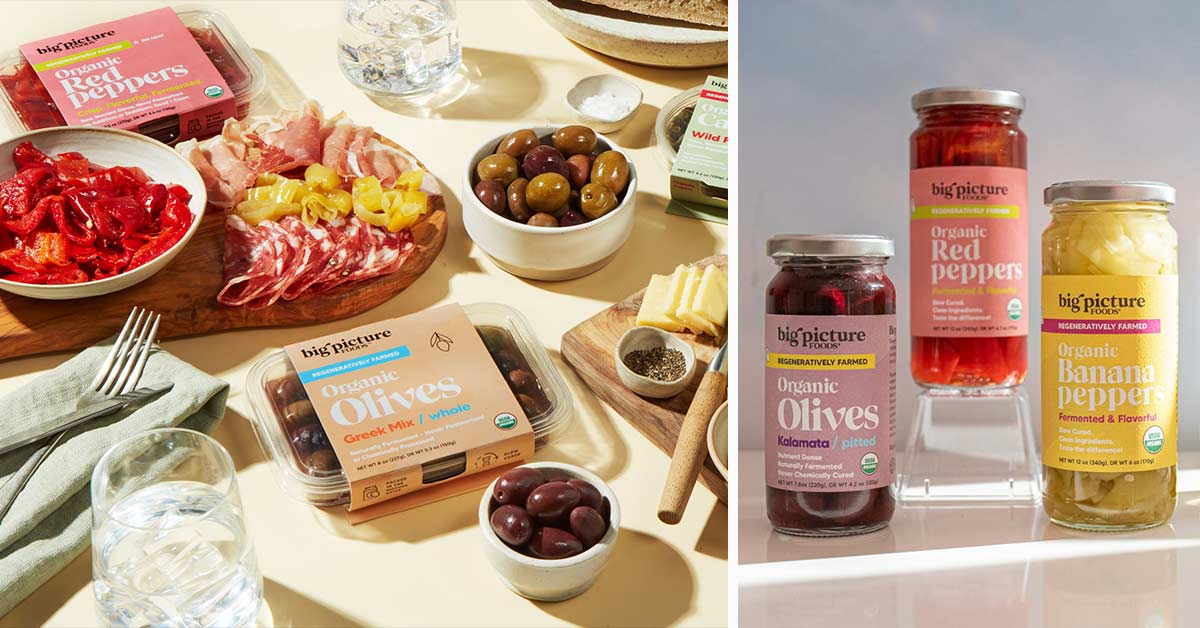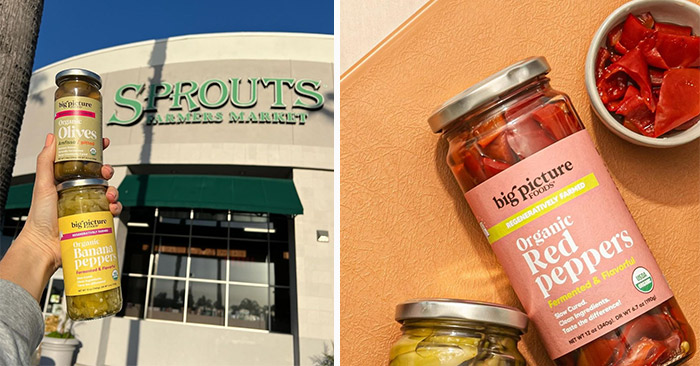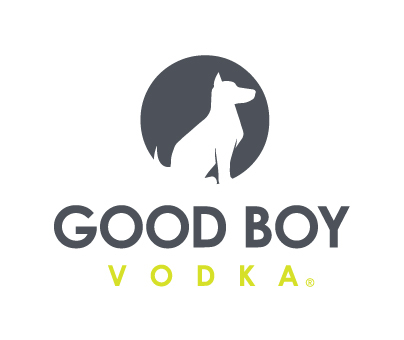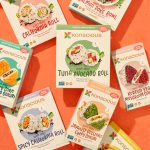Behind Big Picture Foods’ Big Move Across Aisles

As its name suggests, Big Picture Foods has always had a vision that goes beyond its flagship line of fermented, organic and regeneratively-grown olives, peppers and capers, sold in about 1,000 doors. Now, three years after the company’s launch, that picture is starting to come into view after it moved into a new shelf-stable format last year in search of new channel opportunities and use occasions.
The new jars, ranging from 7.8 oz. to 12 oz., depending on the variety, launched into Sprouts’ Innovation set last year, and later rolled out to 131 West Coast Whole Foods stores. That move paid off as now they’ve secured placement nationwide in Sprouts’ mainline set and are expected to enter Whole Foods stores nationwide in June, where they will be sold for $5.49 each.
“It’s been exciting to see the growth of the brand through jars, [but] with Whole Foods also taking our trays – it proves that there is space at retail for our brand to play in a variety of different sets,” said cofounder Daniela Jensen.
Founded in 2020, Big Picture is led by Jensen; her husband Chris, formerly the president of Blue Marble Brands, an emerging brand-focused subsidiary of distributor UNFI; and Sotiris Kitrilakis, the founder of Peloponese and Mt. Vikos (the latter of which was acquired by Blue Marble).
The company began by selling regeneratively-grown, organic Kalamata and Green Amfissa Olives in plastic trays, as well as Red Peppers, Banana Peppers, Pepperoncini and Capers. In that format, the products were often merchandised near the deli or cheese case for $5.49 each, but as Big Picture worked to ramp up at retail, the packaging became a barrier to growth.

“We’re going up and down market [now] so that’s the beauty of jars,” Jensen emphasized. “We can now have conversations that aren’t just about those higher-end specialty offerings. There’s a great example that I heard called the Toledo test. It basically says: do your products have mass appeal to the postman in Toledo? We can [now] confidently say yes.”
The new format, which appears on-shelf closer in line with commodity alternatives, was a key factor for Big Picture to gain “Toledo postman approval.” It also gave the founders a new perspective on the product, concept and the company’s growth trajectory, explained Jensen.
“It was interesting because when we started this the feedback that we were hearing was that they’re already olives, peppers and capers in foodservice [and] they already sit at retail,” said Jensen. “What has been so inspiring to me is the realization that consumers really do understand the disruption of commodity goods.”
The jarred products are exactly the same and priced in line with the raw line, Jensen emphasized, but rather than being sold fresh and requiring refrigeration, they undergo what she calls a “gentle pasteurization” process in which they are lightly heat-treated for a short amount of time to seal the lids and kill any bacteria.
The company’s focus, Jensen said, has always been ensuring its products maintain strong velocities, whether in retail or in testing different high-volume, low-risk channel opportunities such as meal kits, meal delivery and foodservice. It already has one notable partner in Sweetgreen, which used Big Picture’s Organic Banana Peppers on its seasonal Italian Chopped salad.
But moving to jars means the company now has the right formats to go wide in retail. In addition to giving Big Picture an option for dual placements, the jars have helped reopen conversations with conventional retailers who weren’t previously interested in merchandising the trays, Jensen explained.
“The price point is also something that’s worth noting – because of our sourcing and our supply chain, being vertically-integrated, working direct with our farmers, taking out the middleman and commodity buying that typically happens, it allows us to offer a very premium, high quality genuine, organic-certified, clean ingredient products at a conventional or organic price point”

The vertically-integrated business sources its ingredients from farmers in Turkey and Greece, who then ferment and cure the crops for nine months, in partnership with Big Picture’s quality assurance team. That structure allows the brand to keep prices low and its business infrastructure light, but also gives its farmers dual income from both the growing and the fermentation processes.
“By working with our farmers locally, it allows us the opportunity for them to hold the inventory,” Jensen explained. “It’s driving sustainable, socio-economic benefits to our farmers [and] it’s a mutually beneficial program. We buy their full yield, it’s not spot buying and [that] made it very easy for us to recruit [farmers].”
The brand is currently planning retail commitments through 2025 and 2026 and has a list of partner farmers ready to join its network once those agreements are underway. It’s a slow and steady process, Jensen emphasized. In addition to the lengthy fermentation process, the brand is also sourcing seasonal crops, making demand planning and funding future crop commitments all the more important.
“Here’s where the double funding issue comes into play,” said Jensen. “If I had the resources to secure more crops in the upfront, I would have done that. We have to find, as an industry, a way to work and channel the flow of resources to support the brands that are doing this because not only is it better for farmers, and more nutrient rich and better eaters, it’s better for investors too because it’s a more reliable crop yield.”
With nearly four years now under the brand’s belt, and a climate change-induced olive supply crisis at hand, Jensen said she has become even more convinced of the benefits of regenerative farming. According to the European Commission, olive crop yields from the 2022/23 harvest were about 20% lower, on average, than the past five years due to a multi-year-long drought.
“The oil industry has proven that there is a direct effect from climate on crop yields,” Jensen said. “What’s been awesome is our yields have really strongly maintained because of how they’re grown. A regenerative organic crop inherently has more resilience than a commodity crop that is being sprayed, so whether you believe in climate change or not… irregardless of what side of the debate you’re on – we need ways to make our crops tolerant to change.”

















